
Here, I would like to focus on movies in which the connection between the multimedia effects and the plot are evident. More clearly, I believe that the usage of multimedia should not only be used to offer a better 3D experience or simply just to make the image clearer.
Examples:
Avatar
King Kong
Chronicles of Narnia
I call this”pure multimedia” with little substance.
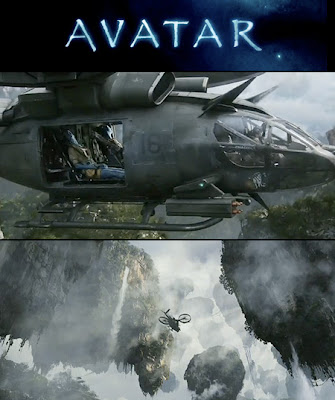 AVATAR
AVATAR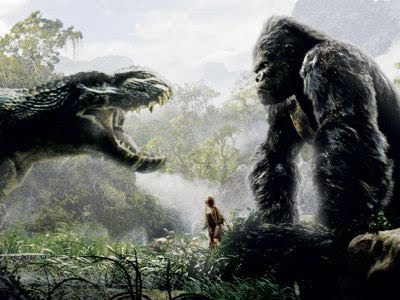 KONG
KONGHowever, What I do truly appreciate are directors who have the ability to mash these effects with the underlying meaning of the plot. I like to call this ‘intellectual multimedia’ and such forms of special effects allows movie critics to analyze a movie from the production’s point of view and understand the subtle messages of the director.
I’ll start with the Master of Suspense, Alfred Hichcock…..
• Hitchcock – movie (VERTIGO)
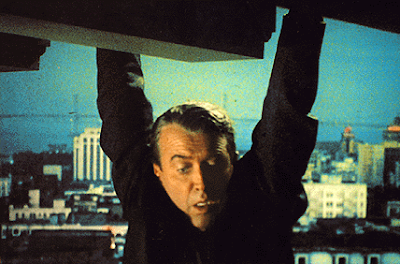 The infamous scene that illustrates the theme of the film
The infamous scene that illustrates the theme of the filmArguably the finest of Hitch’s thrillers, the movie revolves around a retired detective suffering from acrophobia (fear of heights).
He is called upon by an old friend to investigate the strange and mysterious behavior of his wife. Throughout the movie, audience witness the detective’s condition affects his quest to unravel the mystery behind the woman’s behavior.
The scene below shows the protagonist John Ferguson played by Jimmy stewart chasing Madeleine Elster played by Hollywood beauty, Kim Novak.
Hitch used a dolly zoom technique for this shot to give the nauseating effect of acrophobia. This is accomplished by “zooming” the lens in and tracking the camera back simultaneously or vice versa to create the destabilizing effect. This is the camera technique that has been associated and credited as Hitchcock’s own and signature special effect.
This may not be a multimedia effect per se because it isn’t a computer-based interactive communication; however, it has stark similarities to using a video camera and engaging the audience. In other words, it provides meaning and structural solidarity to the film.
• Fincher – movie (FIGHT CLUB)
one of the greatest films of all time and director David Fincher’s cult classic has become a staple for all movie buffs and rebels worldwide. Needless to say, this film combines aesthetic flair with a plot twist that is unimaginably mind-boggling and second to none.
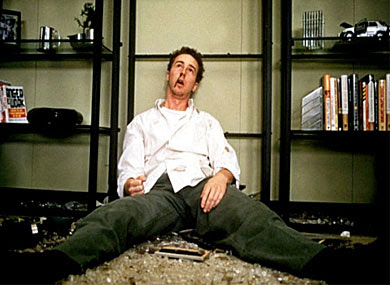 Edward Norton in Fight Club
Edward Norton in Fight ClubHowever, what really caught my attention was the “dissolve” kinetics typography technique used in the title sequence that is not only pleasing to the eye but can also be related to the ending of the movie where audiences witness buildings collapsing due to explosives. Here, the words seem “explode” and vanish much like the bombings of the skyscrapers at the end. Please take a look at the video below.
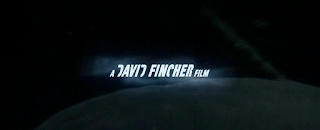
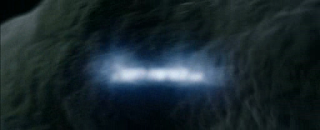 Typography Kinesics
Typography KinesicsThe typographic dissolving is also associated with the sudden disappearance of Tyler Durden (Brad pitt). Audiences later learn that Tyler Durden is a fiction of the narrator’s imagination (Edward Norton). Hence, the dissolving effect used on the introduction typography can be seen as a subtle message relating to the crux of the film.
Multimedia should be used with the purpose to enhance the movie in connection with the plot. It is a supplementary tool and should not be the tool that your movie revolves around.
Questions we should ask is “why and how is this multimedia effect going to help the audience understanding the movie better” and not “can I throw it a few effects just to make the image come alive”. Then you leave yourself exposed to the question “How is this related to the movie?”
These are simply my two cents worth…………….
No comments:
Post a Comment